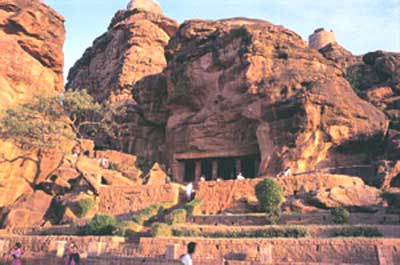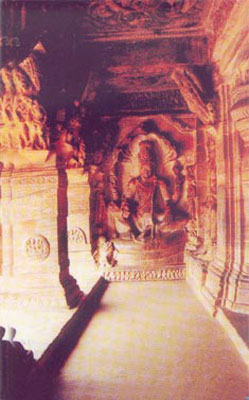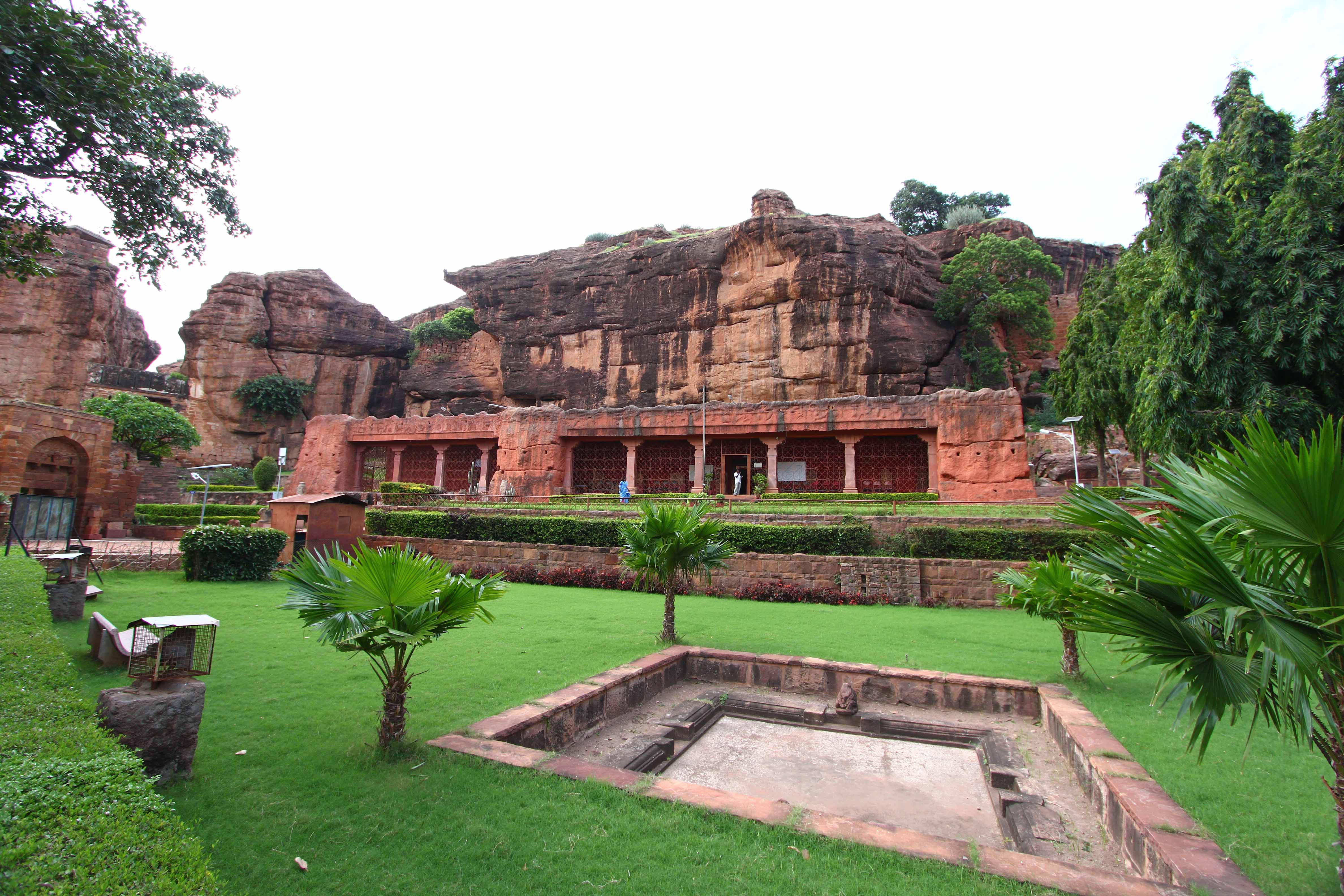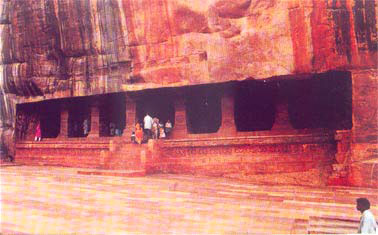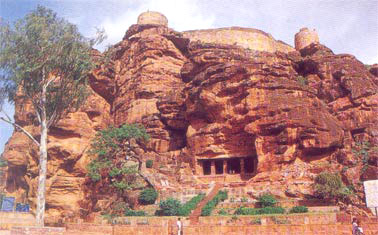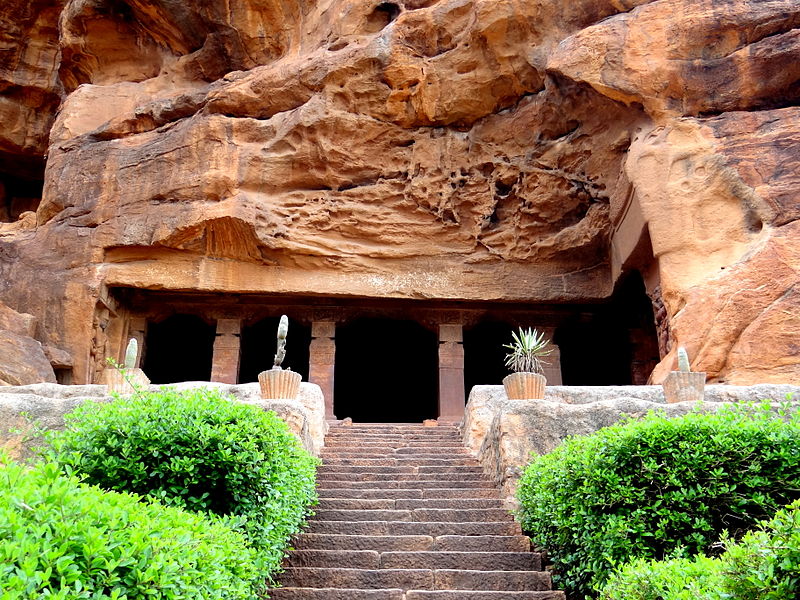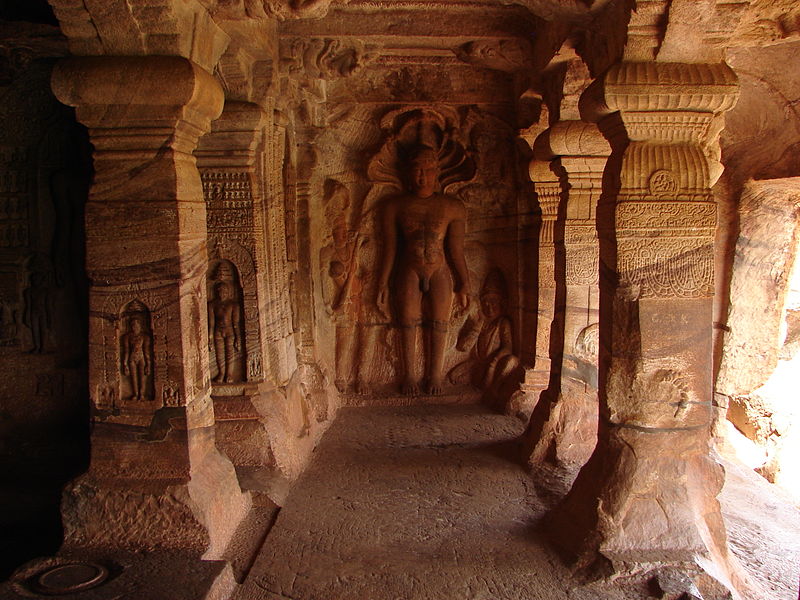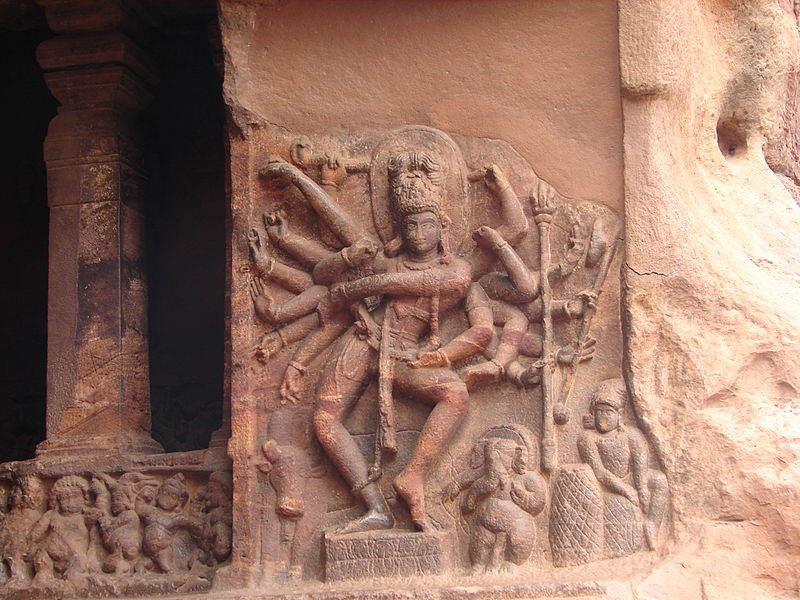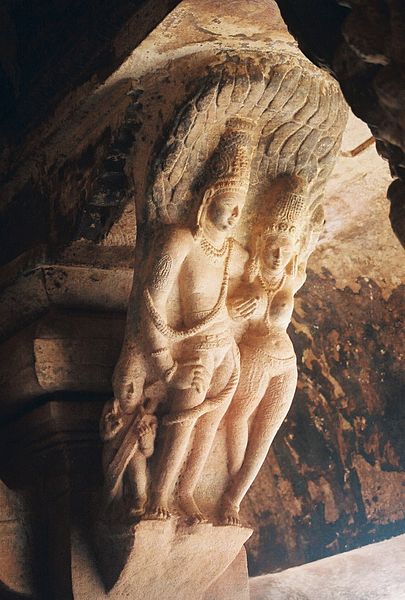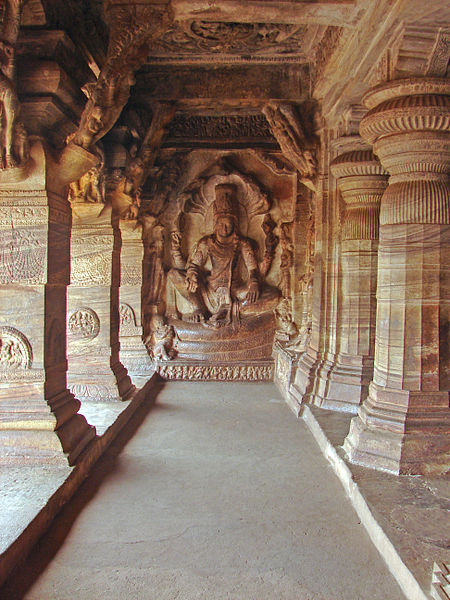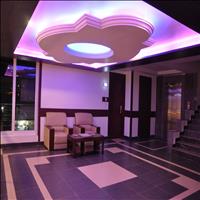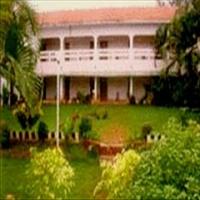Badami
General Information
District: Gadag, State: Karnataka, India
Area: 10.3 Sq. Km.
Languages Spoken: Kannada, Hindi, and English.
Long Distance Code: +91-8357
Importance: Famous for the rock temples
Best Time to Visit: October to March
Description
The capital of the Early Chalukyas, Badami is picturesquely situated at the mouth of a ravine between two rocky hills, Badami is famous for its cave temples - all hewn out of sand stone on the precipice of a hill. <br />Badami is an interesting place to visit in Karnataka what with its artificial lake, ancient temples, Museum and Hindu and Jain caves carved in the Sandstone hills. The largest and most ornamental is the third cave temple dedicated to Vishnu. Overlooking the cave temples is a reservoir dotted with temples dedicated to Vishnu and Shiva. Also a must are the Bhutanath temples that lend their name to the lake beneath the cave temples.<br />
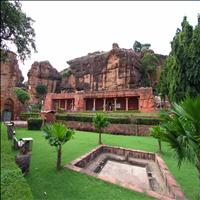 The achaeological museum has some of the most invaluable local sculptures on display which have been excavated from this region. The most remarkable one is the Lajja - Gauri image.
The achaeological museum has some of the most invaluable local sculptures on display which have been excavated from this region. The most remarkable one is the Lajja - Gauri image.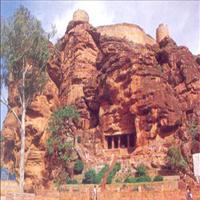 The ancient caves are the main attractions of Badami. Some of the prominent ones are:\r\n \r\nCave 1: \r\nThe cave number one, made of red sandstone, dates back to 578 A.D. and was probably the first cave to be carved. One has to climb up 40 odd steps to reach the colonnaded verandah, a hall with numerous pillars and a square shaped sanctum hollowed in the control back wall. Column shafts are masterfully crafted. On the ceiling one can see the paintings of amorous couples. Shiva and his consort Parvati, and a coiled serpent. The main attraction of the cave is the 18-armed Lord Nataraja, seen in 81 different dancing poses. \r\n\r\nCave 2:\r\nDedicated to Lord Vishnu, the cave has depiction of the Lord in one of his incarnations as a dwarf or Vaman. This Vaman or Trivikrama had the ability to grow and take the earth and sky in one strand. The secon cave atop a sand stone hill shows this image of the Lord. Another form of Vishnu portrayed here is as 'Varaha' or as a boar. Then there is a frieze endearingly depicting Vishnu as Lord Krishna.\r\n\r\nCave 3:\r\nAs one climbs the flight of steps, he reaches the huge 70 feet wide cave number three. This is a beautiful cave with its sheer artistry and sculptural genius, it has become the highlight of Deccan art. \r\nIt gives a virtual insight into the art and culture of the 6th century like costumes, jewelry hairstyle lifestyle etc. The other attractions to be looked carefully in this cave are the high relief of Vishnu with a serpent, Vishnu as Narasimha (Vishnu as Man-Lion) Varaha, Harihara (Shiva Vishnu) and Vishnu as Trivikrama.\r\n\r\nCave 4:\r\nThe only Jain cave among the lot, construction of which completed only 100 years later than the earlier three caves. Here one can see the carvings of the Tirthankara Parshavnatha with a serpent at his feet; Mahavira in a sitting posture also can be seen in the shrine.
The ancient caves are the main attractions of Badami. Some of the prominent ones are:\r\n \r\nCave 1: \r\nThe cave number one, made of red sandstone, dates back to 578 A.D. and was probably the first cave to be carved. One has to climb up 40 odd steps to reach the colonnaded verandah, a hall with numerous pillars and a square shaped sanctum hollowed in the control back wall. Column shafts are masterfully crafted. On the ceiling one can see the paintings of amorous couples. Shiva and his consort Parvati, and a coiled serpent. The main attraction of the cave is the 18-armed Lord Nataraja, seen in 81 different dancing poses. \r\n\r\nCave 2:\r\nDedicated to Lord Vishnu, the cave has depiction of the Lord in one of his incarnations as a dwarf or Vaman. This Vaman or Trivikrama had the ability to grow and take the earth and sky in one strand. The secon cave atop a sand stone hill shows this image of the Lord. Another form of Vishnu portrayed here is as 'Varaha' or as a boar. Then there is a frieze endearingly depicting Vishnu as Lord Krishna.\r\n\r\nCave 3:\r\nAs one climbs the flight of steps, he reaches the huge 70 feet wide cave number three. This is a beautiful cave with its sheer artistry and sculptural genius, it has become the highlight of Deccan art. \r\nIt gives a virtual insight into the art and culture of the 6th century like costumes, jewelry hairstyle lifestyle etc. The other attractions to be looked carefully in this cave are the high relief of Vishnu with a serpent, Vishnu as Narasimha (Vishnu as Man-Lion) Varaha, Harihara (Shiva Vishnu) and Vishnu as Trivikrama.\r\n\r\nCave 4:\r\nThe only Jain cave among the lot, construction of which completed only 100 years later than the earlier three caves. Here one can see the carvings of the Tirthankara Parshavnatha with a serpent at his feet; Mahavira in a sitting posture also can be seen in the shrine.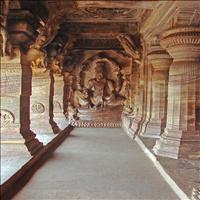 Badami lies at the foot of a rugged, red sandstone outcrop that surrounds Agastya Tirtha tank (an artificial lake) on three sides. It was founded by Pulakesin I of the Chalukya dynasty. Once the capital of the Chalukyas, Badami, called Vatapi back then, is best known today for its rock-cut cave temples. The caves, sculpted in the 6th and 7th centuries CE, depict Hindu, Buddhist and Jain iconography. Cave 1 is devoted to Shiva, caves 2 and 3 are dedicated to Vishnu, and cave 4 displays reliefs of Jain Tirthankaras. A natural cave nearby is dedicated to the Buddha. Carvings of Hindu Gods are strewn across the area in other caverns and on boulders. Two Bhutanatha temples stand facing the lake. Together, these monuments represent the early styles and stages of south Indian temple architecture.
Badami lies at the foot of a rugged, red sandstone outcrop that surrounds Agastya Tirtha tank (an artificial lake) on three sides. It was founded by Pulakesin I of the Chalukya dynasty. Once the capital of the Chalukyas, Badami, called Vatapi back then, is best known today for its rock-cut cave temples. The caves, sculpted in the 6th and 7th centuries CE, depict Hindu, Buddhist and Jain iconography. Cave 1 is devoted to Shiva, caves 2 and 3 are dedicated to Vishnu, and cave 4 displays reliefs of Jain Tirthankaras. A natural cave nearby is dedicated to the Buddha. Carvings of Hindu Gods are strewn across the area in other caverns and on boulders. Two Bhutanatha temples stand facing the lake. Together, these monuments represent the early styles and stages of south Indian temple architecture.Deccan Tour With Kerala / PI-0254 (15 Days / 14 Nights)
Mumbai-Hyderabad-Gulbarga-Bijapur-Badami-Pattadakal-Hospet-Hassan-Mysore-Ooty-Kochi-Mumbai
Indulge yourself in the divine experience of visiting the natural hinterlands of peninsula. Starting from the fast moving financial capital of India, Mumbai, the trip takes you across some of the major attractions of God’s Own Country whether it’s the palace city of Mysore or the picturesque locales of Kochi.
Detailed Itinerary
Day 1 : Mumbai
Day 2 : Mumbai
Day 3 : Mumbai - Hyderabad
Day 4 : Hyderabad - Gulbarga
Day 5 : Gulbarga - Bijapur
Day 6 : Bijapur-Badami-Pattadakal-Hospet
Day 7 : Hospet
Day 8 : Hospet
Day 9 : Hospet-Hassan
Day 10 : Hassan - Mysore
Day 11 : Mysore
Day 12 : Mysore - Ooty
Day 13 : Ooty-Kochi
Day 14 : Kochi
Day 15 : Kochi - Mumbai
Mumbai-Hyderabad-Gulbarga-Bijapur-Badami-Pattadakal-Hospet-Hassan-Mysore-Ooty-Kochi-Mumbai
Indulge yourself in the divine experience of visiting the natural hinterlands of peninsula. Starting from the fast moving financial capital of India, Mumbai, the trip takes you across some of the major attractions of God’s Own Country whether it’s the palace city of Mysore or the picturesque locales of Kochi.
Detailed Itinerary
Day 1 : Mumbai
Day 2 : Mumbai
Day 3 : Mumbai - Hyderabad
Day 4 : Hyderabad - Gulbarga
Day 5 : Gulbarga - Bijapur
Day 6 : Bijapur-Badami-Pattadakal-Hospet
Day 7 : Hospet
Day 8 : Hospet
Day 9 : Hospet-Hassan
Day 10 : Hassan - Mysore
Day 11 : Mysore
Day 12 : Mysore - Ooty
Day 13 : Ooty-Kochi
Day 14 : Kochi
Day 15 : Kochi - Mumbai
Karnataka With Wildlife & Beach In Goa / PI-0256 (14 Days / 13 Nights)
Hyderabad-Bidar-Gulbarga-Bijapur-Badami-Pattadakal-Hospet-Hampi-Hospet-Dandeli-Goa-Mumbai
Stretching from the evergreen forests of Western ghats to the scrub jungle of plains, this trip takes you across the picturesque state of Karnataka. The forest reserves of the state are then followed by the relaxing sandy beaches of Goa where you can unwind in the tranquil setting of calm beaches and beautiful resorts.
Detailed Itinerary
Day 1 : Hyderabad
Day 2 : Hyderabad
Day 3 : Hyderabad-Bidar-Gulbarga
Day 4 : Gulbarga - Bijapur
Day 5 : Bijapur - Badami
Day 6 : Badami-Pattadakal-Hospet
Day 7 : Hospet-Hampi-Hospet
Day 8 : Hospet-Dandeli
Day 9 : Dandeli
Day 10 : Dandeli - Goa
Day 11 : Goa
Day 12 : Goa
Day 13 : Goa - Mumbai
Day 14 : Mumbai
Hyderabad-Bidar-Gulbarga-Bijapur-Badami-Pattadakal-Hospet-Hampi-Hospet-Dandeli-Goa-Mumbai
Stretching from the evergreen forests of Western ghats to the scrub jungle of plains, this trip takes you across the picturesque state of Karnataka. The forest reserves of the state are then followed by the relaxing sandy beaches of Goa where you can unwind in the tranquil setting of calm beaches and beautiful resorts.
Detailed Itinerary
Day 1 : Hyderabad
Day 2 : Hyderabad
Day 3 : Hyderabad-Bidar-Gulbarga
Day 4 : Gulbarga - Bijapur
Day 5 : Bijapur - Badami
Day 6 : Badami-Pattadakal-Hospet
Day 7 : Hospet-Hampi-Hospet
Day 8 : Hospet-Dandeli
Day 9 : Dandeli
Day 10 : Dandeli - Goa
Day 11 : Goa
Day 12 : Goa
Day 13 : Goa - Mumbai
Day 14 : Mumbai
Culture Of Karnataka / PI-0267 (15 Days / 14 Nights)
Mumbai-Hyderabad-Gulbarga-Bijapur-Badami-Hospet-Hassan-Mysore-Bengaluru-Kochi-Alappuzha-Kochi-Mumbai
Karnataka is a state of rich heritage, ancient lineages and diverse languages. Its ethnic grandness is fortified by the embossments of various rulers who have ruled the place in addition to its huge ambit of festivals, music and royal cuisine. Home to various tribes, the place is also home to the famous rock edicts of King Ashoka that epitomize the aestheticism and regal artistry of the place.
Detailed Itinerary
Day 1 : Mumbai
Day 2 : Mumbai
Day 3 : Mumbai - Hyderabad
Day 4 : Hyderabad - Gulbarga
Day 5 : Gulbarga - Bijapur
Day 6 : Bijapur - Badami
Day 7 : Badami - Hospet
Day 8 : Hospet
Day 9 : Hospet - Hassan
Day 10 : Hassan - Mysore
Day 11 : Mysore
Day 12 : Mysore - Bengaluru - Kochi
Day 13 : Kochi
Day 14 : Kochi-Alappuzha
Day 15 : Alappuzha-Kochi-Mumbai
Mumbai-Hyderabad-Gulbarga-Bijapur-Badami-Hospet-Hassan-Mysore-Bengaluru-Kochi-Alappuzha-Kochi-Mumbai
Karnataka is a state of rich heritage, ancient lineages and diverse languages. Its ethnic grandness is fortified by the embossments of various rulers who have ruled the place in addition to its huge ambit of festivals, music and royal cuisine. Home to various tribes, the place is also home to the famous rock edicts of King Ashoka that epitomize the aestheticism and regal artistry of the place.
Detailed Itinerary
Day 1 : Mumbai
Day 2 : Mumbai
Day 3 : Mumbai - Hyderabad
Day 4 : Hyderabad - Gulbarga
Day 5 : Gulbarga - Bijapur
Day 6 : Bijapur - Badami
Day 7 : Badami - Hospet
Day 8 : Hospet
Day 9 : Hospet - Hassan
Day 10 : Hassan - Mysore
Day 11 : Mysore
Day 12 : Mysore - Bengaluru - Kochi
Day 13 : Kochi
Day 14 : Kochi-Alappuzha
Day 15 : Alappuzha-Kochi-Mumbai
Karnataka With Buddhist Tour / PI-0269 (15 Days / 14 Nights)
Mumbai-Aurangabad-Mumbai-Hyderabad-Gulbarga-Bijapur-Badami-Hospet-Hassan-Mysore-Bengaluru
This Buddhist tour of Karnataka takes you across the several Buddhist pilgrimage sites of the state that are considered to be important historical pieces of Indian history too. Starting from Aurangabad, the tour takes you across the scenic cities of Gulbarga, Bijapur, Badami, Hospet, the palace city of Mysore and finally ending with the fast moving yet laid back city of Bengaluru.
Detailed Itinerary
Day 1 : Mumbai
Day 2 : Mumbai
Day 3 : Mumbai - Aurangabad
Day 4 : Aurangabad - Mumbai
Day 5 : Mumbai-Hyderabad
Day 6 : Hyderabad - Gulbarga
Day 7 : Gulbarga - Bijapur
Day 8 : Bijapur - Badami
Day 9 : Badami - Hospet
Day 10 : Hospet
Day 11 : Hospet - Hassan
Day 12 : Hassan - Mysore
Day 13 : Mysore
Day 14 : Mysore - Bengaluru
Day 15 : Bengaluru
Mumbai-Aurangabad-Mumbai-Hyderabad-Gulbarga-Bijapur-Badami-Hospet-Hassan-Mysore-Bengaluru
This Buddhist tour of Karnataka takes you across the several Buddhist pilgrimage sites of the state that are considered to be important historical pieces of Indian history too. Starting from Aurangabad, the tour takes you across the scenic cities of Gulbarga, Bijapur, Badami, Hospet, the palace city of Mysore and finally ending with the fast moving yet laid back city of Bengaluru.
Detailed Itinerary
Day 1 : Mumbai
Day 2 : Mumbai
Day 3 : Mumbai - Aurangabad
Day 4 : Aurangabad - Mumbai
Day 5 : Mumbai-Hyderabad
Day 6 : Hyderabad - Gulbarga
Day 7 : Gulbarga - Bijapur
Day 8 : Bijapur - Badami
Day 9 : Badami - Hospet
Day 10 : Hospet
Day 11 : Hospet - Hassan
Day 12 : Hassan - Mysore
Day 13 : Mysore
Day 14 : Mysore - Bengaluru
Day 15 : Bengaluru
Badami, India Tours

